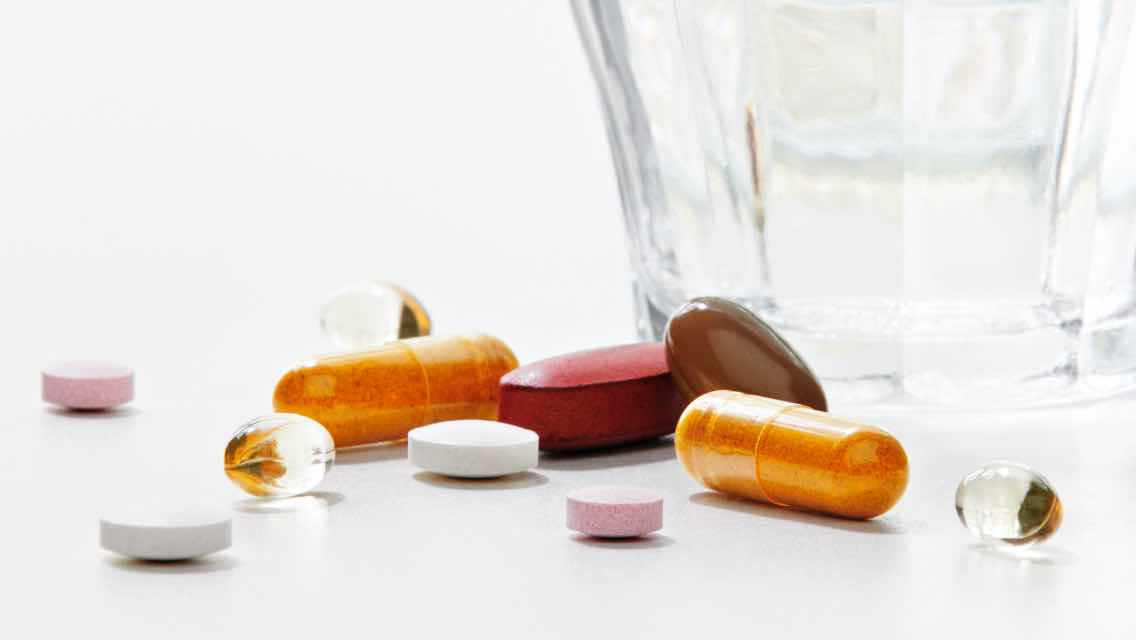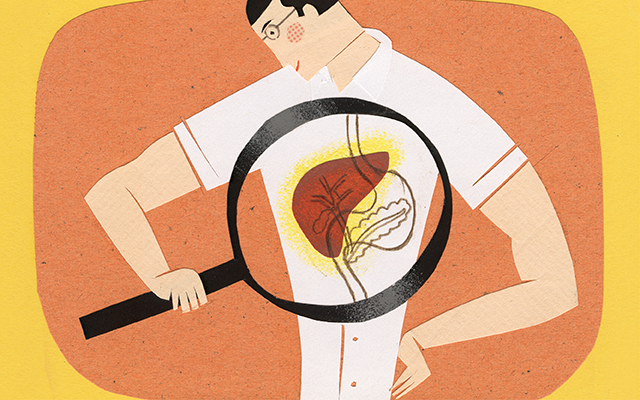A healthy liver means a healthy metabolism, a healthy cardiovascular system, and a healthy body overall. So it’s worth taking a few measures to optimize this organ’s function. Experts recommend these steps to prevent and reverse NAFLD (nonalcoholic fatty liver disease), and to maintain a healthy liver.
1) Ditch high-fructose corn syrup.
Processed foods and soda are the top sources of HFCS in the diet, says Dina Halegoua-DeMarzio, MD, a gastroenterologist who specializes in liver disease at Thomas Jefferson University Hospitals in Philadelphia, and she views it as a primary cause of NAFLD. Making whole foods — especially vegetables, pastured-animal proteins, nuts and seeds, and some low-glycemic fruits (think cherries, blueberries, and grapefruit) — the mainstays of your nutrition plan is a boon to liver health.
2) Be mindful with fruit.
Fruits contain fructose in varying amounts; they also contain fiber, pectin, and often an enormous number of phytonutrients. When fructose is part of this matrix of healthy plant compounds, its impact on the liver is less severe, says Robert Rountree, MD, a Boulder, Colo.-based integrative practitioner. Consuming fructose as an isolated chemical is when it starts causing health problems.
At the same time, fruit affects everyone differently.
“Theoretically, we should all be able to eat fruit, and the fiber should slow digestion,” says Frank Lipman, MD, coauthor of The New Health Rules: Simple Changes to Achieve Whole-Body Wellness. “But a lot of people — I’m one of them — have problems when they eat a lot of fruit. People have different tolerances.”
If eating a certain fruit puts you on the blood-sugar roller coaster, eat it only in moderation. Stick with fruits or other foods that don’t leave you “hangry.”
3) Get your daily fiber.
“Fiber prevents the intestines from absorbing fructose too soon, so you don’t get that tsunami on the liver,” says Robert Lustig, MD, a pediatric endocrinologist at the University of California, San Francisco. When you eat fruit, pair it with foods that are high in fiber so the liver isn’t flooded with fructose. Ideal pairings include chia- and flaxseeds, nuts and nut butters, avocados, and leafy greens. (See “Fiber: Why It Matters More Than You Think.”)
4) Embrace healthy fats.
Experts generally agree that healthy fats don’t contribute to NAFLD (trans fats, on the other hand, are a problem). To support good metabolism and cognitive function, turn to the healing fats found in small, oily fish; olives and olive oil; avocados; nuts and seeds; grassfed-animal protein; and coconut oil and ghee.
Still, clinicians who treat people with metabolic syndrome and NAFLD say a small percentage of patients who reduce sugar don’t see sufficient improvements in their liver enzyme and triglyceride counts, likely due to genetic differences that affect how well someone metabolizes fat. These people might benefit from limiting the amount of saturated fat in their diet.
5) Skip fast food.
The trans fats and HFCS found in processed fast food damage the liver. Just drive by the drive-through.
6) Increase choline.
It’s estimated that only 10 percent of Americans meet or exceed their recommended daily choline intake. Eating choline-rich foods, including eggs and liver, boosts its stores in the body. Supplemental choline (often in the form of phosphatidylcholine) can be helpful if your levels remain low due to genetic variations or an overpopulation of bad gut microbes.
7) Ease up on medications where possible.
Frequent use of over-the-counter medications can harm the liver. Nutritionist Ann Louise Gittleman, PhD, CNS, cites a study of 300 patients by the University of Texas Southwestern Medical Center that found that 38 percent of liver-failure cases and 37 percent of severe liver disease were associated with excessive use of acetaminophen, the active ingredient in Tylenol.
Before any medication can be effective, it must be processed by the body, and this job falls largely to the liver, explains Gittleman. The more pharmaceuticals we ingest — through prescription drugs or over-the-counter remedies — the harder the liver must work. So take prescribed medications only as recommended, and consult with your healthcare provider to make sure they’re necessary.
Meanwhile, Rountree says, no pharmaceuticals have been approved by the FDA for treating NAFLD. The blood-sugar-lowering drug Metformin can help stabilize type 2 diabetes but has a minimal effect on fat accumulation in the liver.
8) Minimize toxic exposure.
The list of toxins that exact a toll on the liver is long, but take special care to avoid the following: persistent organic pollutants (POPs), which include insecticides such as DDT and chemicals used in large-scale industrial and agricultural operations; common herbicides such as atrazine and glyphosate; and heavy metals like lead, mercury, and arsenic (see “How Heavy Metals Affect the Body.”)
This is easier than it sounds. Eating organic foods, avoiding lawn chemicals, and using a high-quality water filter for your shower and drinking water can all significantly reduce exposure to these compounds.
9) Supplement wisely.
Guar gum is a powerful soluble-fiber supplement that has been shown in animal studies to reduce fat accumulation and inflammation in the liver. In supplement form, it’s partially hydrolyzed, so its otherwise-unpleasant taste disappears. (It also doesn’t cause gas and bloating the way it can when combined with some foods.)
Another helpful supplement is nicotinamide riboside, a precursor to nicotinamide adenine dinucleotide (NAD). A coenzyme found in all living cells, NAD plays an important role in extracting energy from food and repairing DNA damage. Our bodies’ NAD level decreases as we age, says Rountree, and “when NAD gets low, you don’t burn fat as efficiently, so fat accumulates.”
10) Exercise.
Studies show that losing just 3 to 5 percent of total body weight can significantly improve fatty liver. Consider high-intensity interval training for the most substantial fat-burning benefits. (For more on interval training, see “How to Do a HIIT Workout.”)
All this is good news. It means that even if we find out we’re further down the road to fatty liver than we suspected, we can always turn back.
Nonalcoholic fatty liver disease affects up to a third of Americans, taking a toll on our collective health. Nutrition and lifestyle changes can turn it around. See “The Hidden Liver Crisis,” from which this was excerpted, for more.




This Post Has 0 Comments